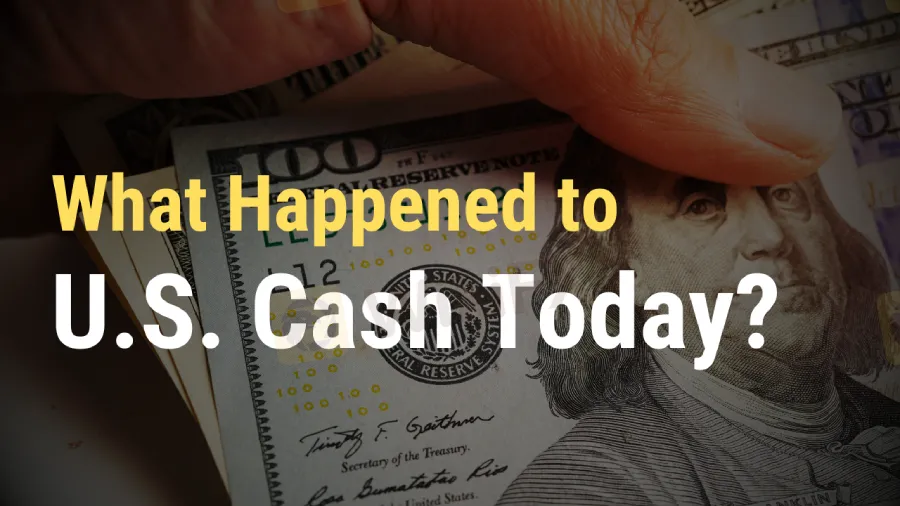简体中文
繁體中文
English
Pусский
日本語
ภาษาไทย
Tiếng Việt
Bahasa Indonesia
Español
हिन्दी
Filippiiniläinen
Français
Deutsch
Português
Türkçe
한국어
العربية
What Happened to U.S. Cash Today?
Abstract:Uncover the transformation of U.S. currency, from traditional paper notes to emerging digital forms, in this insightful article on America's monetary evolution.

The Federal Reserve intends to spend $931.4 million on printing banknotes in 2023. This statistic begs the question, “Does the US cash system need to be overhauled?” At the core of the problem is the fact that, unlike many other countries, the United States has not updated its currency. This unwillingness to change might be a major blunder.
For example, there is a rising case for the United States to replace paper currency with dollar coins. Physical money has developed globally, with several nations adopting more durable forms, such as polymer notes, which endure substantially longer than paper. However, the United States has continued to utilize conventional paper money.
This commitment to paper notes is noteworthy, particularly given that a rising number of Americans are abandoning cash in favor of electronic payments. According to Pew Research Center research, 41% of Americans did not use cash in a normal week in 2022, a considerable rise from 29% in 2018. Despite this tendency, there is more currency in circulation than ever before, and its production grows by 1.5 to 2% every year.
The present condition of US money is a complicated blend of increasing digital transactions and ongoing cash use. While the government actively participates in electronic commerce, it is still the body in charge of producing money. This dual function illustrates a distinguishing feature of the United States financial system: the coexistence of digital and physical monetary types.

The circulation of various denominations is one of the most striking indicators of the status of the US currency system. The $100 note has eclipsed the $1 bill, which was formerly the most popular. There are now 18.5 billion $100 bills in circulation, demonstrating the worldwide function of US money as a store of wealth. However, given the privacy that cash transactions provide, the adoption of greater denominations such as the $100 note raises worries about their usage for tax evasion or illicit activity.
The development of the US dollar displays intriguing historical themes. The $2 note and half-dollar coin, which were formerly widespread, have fallen out of favor in ordinary transactions, owing in part to their removal from vending machines and cash registers. Furthermore, when checks and credit card payments grew more common, the United States phased out bigger denominations such as $500 and $1000 notes.
The creation of US money is a huge undertaking. The Bureau of Engraving and Printing, which is overseen by the US Treasury, is in charge of paper notes, while the US Mint is in charge of coinage. According to the cost breakdown of generating paper bills, 28% of the cost is given to materials such as paper and ink, while 63% is dedicated to manufacturing overhead, research, and engraving. The endurance of US banknotes, constructed of a linen and cotton mix, pales in contrast to the lifetime of metal coins, which may survive up to 30 years in circulation.

Globally, there is a trend toward more durable money forms, such as smaller-value coins and polymer notes. Australia, Japan, and several European countries have adopted these developments. The United States, on the other hand, has been reticent to undertake a comparable change. Attempts to introduce $1 coins and reinstate the $2 note in the past have failed, owing primarily to popular choice and the fiscal implications of such a changeover.
The argument about the effectiveness of coinage vs paper money continues. While coins may be more durable and cost-effective in the long term, the United States has resisted this transformation for a variety of reasons, including vendor special interests and the unique qualities of the United States as a global currency player.
Concerns have also been raised about the environmental effect of printing paper notes, which often use hazardous ink for anti-counterfeiting procedures. However, there is substantial opposition in the United States to the use of dollar coins or polymer notes. This opposition may be linked in part to the Federal Reserve's policies and the larger financial environment, where digital transactions are becoming more common.
Modernizing currency is a difficult task. Banknotes are sophisticated tools, and combining technology breakthroughs such as blockchain connections might change the way we use money. However, many companies continue to accept both electronic and cash payments, and novel methods to bridge the digital-physical money divide are developing.
The argument over the future of cash continues as the United States grapples with the changing environment of money and payment systems. Should the United States follow global trends and shift to more lasting, environmentally friendly monetary forms? Or should it continue to strike a balance between digital and old payment methods? These are concerns that not only reflect economic considerations but also cultural choices and financial technology improvements.
Cash's place in American culture will surely continue to develop as a result of a mix of popular choice, technological progress, and economic reality. The transition of US currency from paper notes to possibly more contemporary forms will be an important part of this development, reflecting the changing dynamics of money in a digital age.

Disclaimer:
The views in this article only represent the author's personal views, and do not constitute investment advice on this platform. This platform does not guarantee the accuracy, completeness and timeliness of the information in the article, and will not be liable for any loss caused by the use of or reliance on the information in the article.
Read more

Charles Schwab Review: Traders Claim Illegitimate Profit Cancellation, Trade Manipulation & More
Have you been lured into the Charles Schwab app for trading on the back of outrageous profit claims by the broker? Did you fail to receive any of these? Does the broker deny withdrawals every time you request and cancel your forex trading account? Have you been victimized financially by its trade manipulation? Act before you are left with a NIL balance in your account. Many traders have questioned Charles Schwab customer service and many other operational executives for the aforementioned illegitimate trading activities. In this Charles Schwab review article, we have shared some of their comments. Read on!

AMP Futures Exposed: Traders Raise Alarms Over Illegitimate Account Blocks & Bad Customer Service
Has AMP Futures blocked your forex trading account? Does it fail to provide any explanation for this act? Do you face issues concerning deposits to your AMP Futures account? Is the customer service non-existent for any trading query you raise with it? You are not alone! Many traders have been facing these issues upon AMP Futures login. Some of them have commented on AMP Futures review platforms. In this article, we have shared some reviews that you can look at. Read on!

FXGlory Review: Vanishing Profits, Capital Scams & Withdrawal Charges Keep Annoying Traders
Does FXGlory remove all your forex trading account balances upon fund withdrawal requests? Or do you witness incorrect trading account balances after fund withdrawals? Does the Saint Lucia-based forex broker charge you for fund withdrawals? All these and many more scam-related complaints have been filed against the forex broker. In this FXGlory review article, we will discuss several complaints. Read on!

PINAKINE Broker Review: A Complete Look at Its Services and Risks
Finding a trustworthy broker from the huge and often confusing world of online trading options is one of the biggest challenges a trader faces. In this competitive market, PINAKINE Liquidity Limited has appeared, getting attention with promises of high leverage and zero-commission trading. However, a closer look shows important factors that every potential client must think about before investing. The most important thing to consider with PINAKINE is that it has no regulation. This fact completely changes how risky the broker is and has major effects on how safe your investments will be. This review gives a complete and fair examination based on information available to the public. We will break down its services, trading conditions, platform technology, and the possible risks involved, helping you make a fully informed decision.
WikiFX Broker
Latest News
Private payrolls rose 42,000 in October, more than expected and countering labor market fears, ADP says
Yields Rise, Rate-Cut Odds Slide As ISM Services Survey Signal Inflation Fears
Op-ed: The fuel for the AI boom driving the markets is advertising. It is also an existential risk.
Stonefort Broker Review 2025: Legit or Risky? A Complete Analysis
He Thought It Was a Crypto Investment; It Cost Him RM1.2 Million
CHINA BEST Broker Review: Regulation and Risks
Uniglobe Markets Review 2025: A Safe Broker or a High-Risk Scam?
Chicago Fed's Goolsbee says he's cautious about further rate cuts during shutdown
These Are Europe's Top Economies By Projected 2026 GDP
Quantower Review 2025: User Reviews and Complaints in India
Currency Calculator




